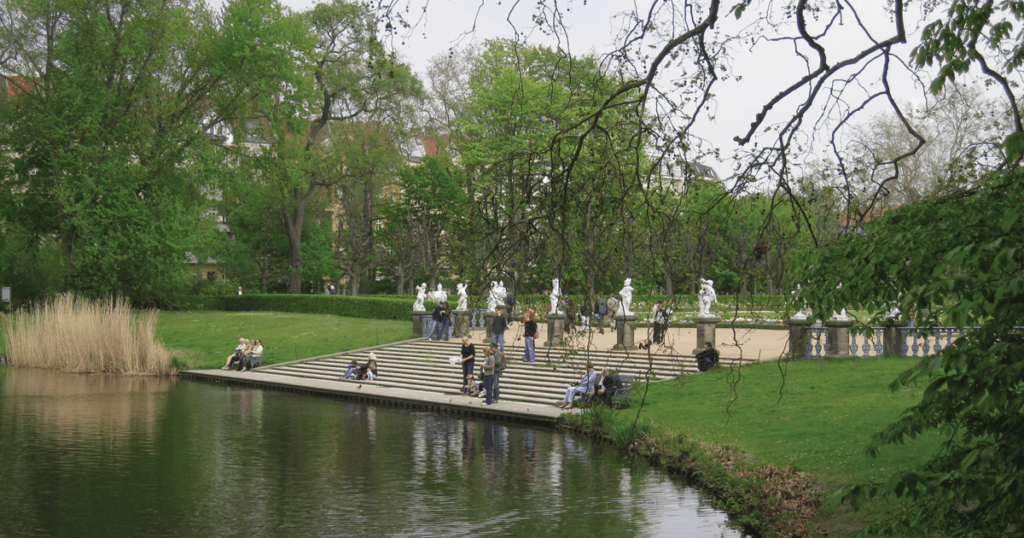
The Charlottenburg Palace Gardens, with its manicured lawns and carp pond, and Treptower Park, famous for its Soviet War Memorial, are popular Berlin attractions. Thousands of tourists visit each year, as well as locals walking their dogs, jogging, or enjoying a picnic lunch. Scholars from the Technical University of Berlin and the Berlin-Brandenburg Institute of Advanced Biodiversity Research were curious about how these visitors interacted with the parks’ rich variety of plant life. In 2017, the team published the first detailed analysis of human-biodiversity interaction in a park setting, in the journal Landscape and Urban Planning.
Certain behaviors were predictable: people photographing or picking wildflowers, for example. More surprising was how many visitors—12 percent of the 498 who were interviewed and studied—went to the parks specifically to interact with plants, many foraging for red currants, nettles, and dandelions for food, tea, or medicinal purposes. The study’s lead author, Julia Palliwoda, says that people also picked wild grasses, white clover, and cornelian cherry to make pet food for their parrots, guinea pigs, and rabbits. Others spent time trying to identify such species as ribwort plantain and common medlar. Nearly 80 percent of all human-plant interactions, it turned out, involved women.
Given the increased popularity of foraging, the Berlin study could influence how parks are designed and maintained, allowing for more hands-on interactivity, with thought given to planting specific flora that might appeal to visitors. Moreover, the study reminds us that a mindful enjoyment of nature can take place in urban environments as well as the countryside. “Cities are often considered to be distant from nature, and it is thought that most urban dwellers don’t know anything about particular species,” Palliwoda says. “The study shows the opposite—or at least that urban nature can be a platform for encouraging human-nature interactions in a positive way.”

